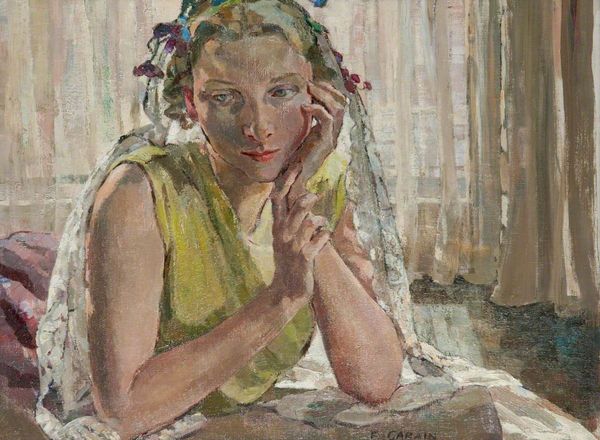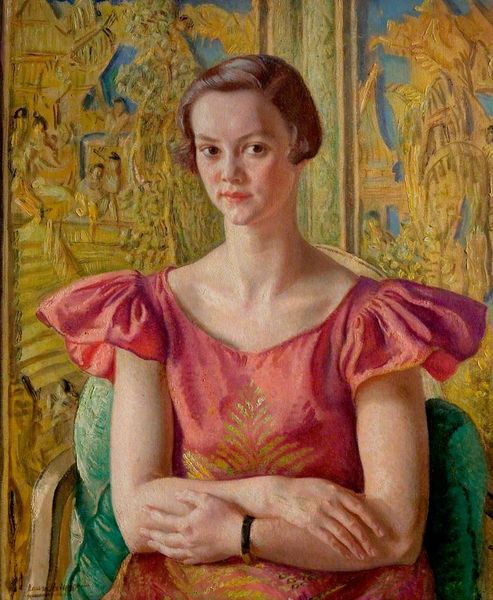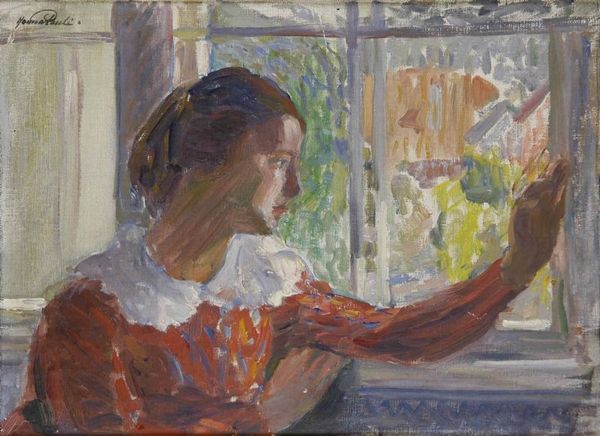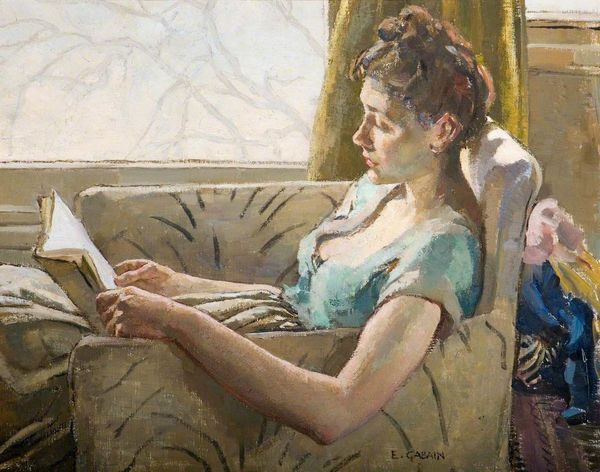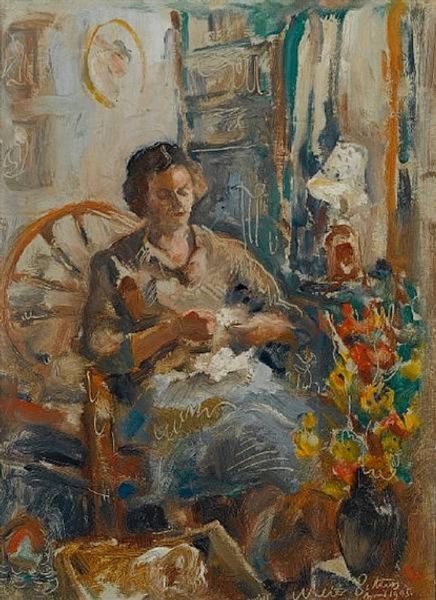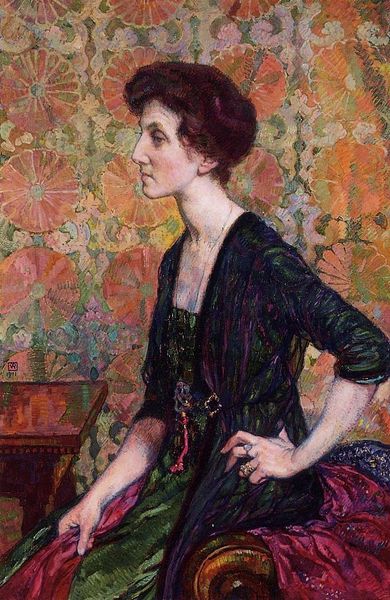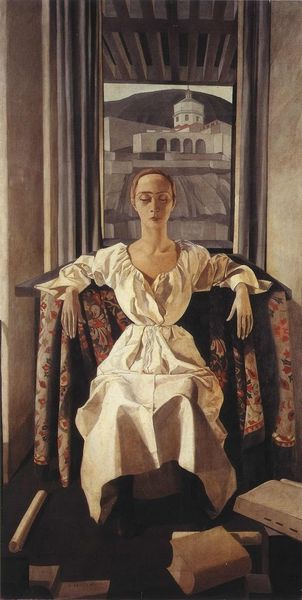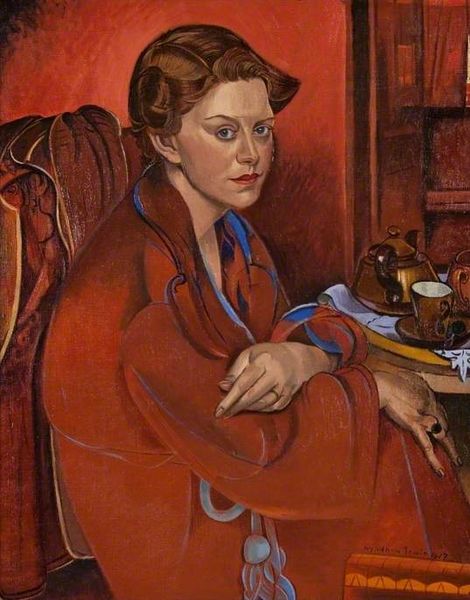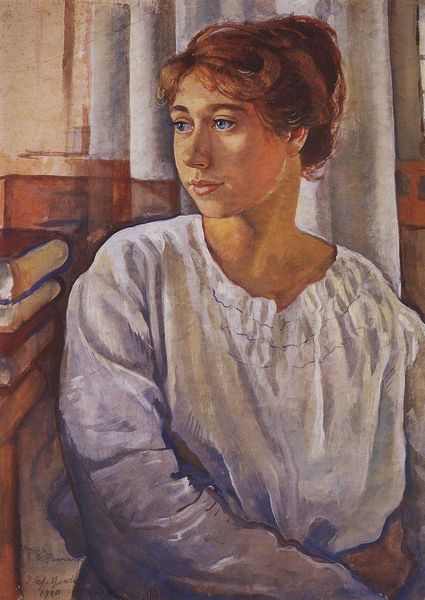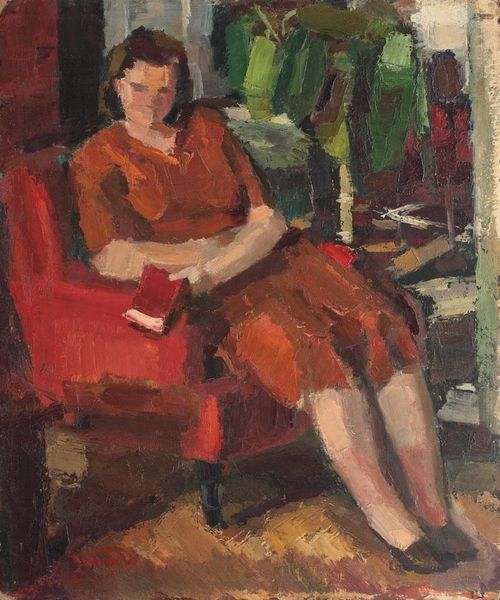
painting, oil-paint
#
portrait
#
painting
#
impressionism
#
oil-paint
#
oil painting
#
intimism
#
portrait art
Copyright: Public domain
Editor: We’re now looking at “At a Sunny Window,” an oil painting by Ethel Léontine Gabain. It feels like a very intimate, personal portrait. What do you see when you look at this piece? Curator: Initially, the interplay of light and shadow arrests my attention. Notice how the luminosity flooding in from the window doesn't merely illuminate, but it sculpts the figure. Consider the deliberate tonal variations—how the verdant hues of her attire shift, morphing from vibrant to subdued as they recede from the light. Editor: So, the color and light are crucial. How does that create meaning? Curator: Precisely. Observe how Gabain uses the structural elements to direct our gaze. The composition invites us to contemplate the inherent formalism: the spatial relationships between figure, window, and the surrounding domestic sphere. Note also the brushstrokes—vigorous, yet controlled. This evokes a sense of immediacy. How does this formal approach affect your perception of the subject’s emotional state? Editor: It feels very much about capturing a fleeting moment. Like a snapshot of an interior life. I guess I didn’t notice the brushstrokes so much at first, but they do add to that feeling. Curator: The impressionistic touches definitely contribute to that affect. So, through the visual components—light, colour, and form—Gabain’s painting goes beyond representation, inviting reflection on the nature of observation itself. Editor: That makes sense. I've never thought so much about brushstrokes and light before. I can better appreciate how they're used to create meaning. Curator: Indeed. Hopefully you see the expressive power within its visual language.
Comments
No comments
Be the first to comment and join the conversation on the ultimate creative platform.
